-
 Bitcoin
Bitcoin $79,552.6021
4.06% -
 Ethereum
Ethereum $1,575.7578
4.90% -
 Tether USDt
Tether USDt $1.0001
0.06% -
 XRP
XRP $1.9584
10.46% -
 BNB
BNB $563.7042
3.59% -
 USDC
USDC $1.0003
0.03% -
 Solana
Solana $111.3102
8.63% -
 Dogecoin
Dogecoin $0.1542
10.29% -
 TRON
TRON $0.2366
4.66% -
 Cardano
Cardano $0.6119
12.33% -
 UNUS SED LEO
UNUS SED LEO $8.9969
0.91% -
 Chainlink
Chainlink $11.7716
8.37% -
 Toncoin
Toncoin $3.1364
3.40% -
 Stellar
Stellar $0.2390
8.09% -
 Avalanche
Avalanche $17.5668
12.45% -
 Hedera
Hedera $0.1650
19.79% -
 Sui
Sui $2.0727
11.83% -
 Shiba Inu
Shiba Inu $0.0...01138
3.67% -
 MANTRA
MANTRA $6.2487
2.02% -
 Polkadot
Polkadot $3.6651
7.20% -
 Bitcoin Cash
Bitcoin Cash $283.6205
7.73% -
 Litecoin
Litecoin $73.0941
8.42% -
 Dai
Dai $1.0003
0.04% -
 Ethena USDe
Ethena USDe $0.9992
0.06% -
 Bitget Token
Bitget Token $4.1847
6.28% -
 Hyperliquid
Hyperliquid $12.0976
17.98% -
 Pi
Pi $0.5834
4.14% -
 Monero
Monero $205.6037
6.06% -
 Uniswap
Uniswap $5.2174
5.49% -
 OKB
OKB $52.7543
5.80%
how blockchain prevents double spending
By combining the distributed ledger with cryptographic hashing, proof-of-work consensus, immutability, public key cryptography, and transaction fees, blockchain effectively prevents double spending, fostering trust in digital currencies as reliable exchange mediums.
Oct 13, 2024 at 08:05 pm

How Blockchain Prevents Double Spending
Double spending refers to the fraudulent act of spending the same digital currency twice. In traditional banking systems, this is prevented by centralized authorities like banks that maintain records of account balances and transactions. However, in decentralized blockchain networks, there is no such central authority to enforce transaction integrity.
Blockchain employs several mechanisms to prevent double spending, including:
1. Distributed Ledger:
- Transactions are recorded on a distributed ledger maintained across multiple nodes in the network.
- Each node has a complete copy of the ledger, making it nearly impossible for a malicious actor to alter it.
2. Cryptographic Hashing:
- Each transaction is assigned a unique cryptographic hash, a mathematical fingerprint that cannot be replicated.
- Once a transaction's hash is computed, it is stored in the ledger along with the transaction details.
3. Proof-of-Work or Proof-of-Stake Consensus:
- Transactions are validated by miners or stakers who compete to solve complex mathematical puzzles.
- The first one to solve the puzzle adds a new block to the ledger, containing the verified transactions.
4. Immutability:
- Once a block is added to the ledger, its contents cannot be altered or reversed.
- This is achieved through the consensus mechanism and the use of cryptographic hashes that link each block to the previous one.
5. Public Key Cryptography:
- Transactions are signed using the sender's private key, which is not shared with others.
- The receiver verifies the signature using the sender's public key, which is made public.
- This ensures that only the legitimate owner can spend the currency.
6. Transaction Fees:
- Most blockchain networks charge a small fee for initiating transactions.
- This fee incentivizes honest behavior by making double-spending an expensive proposition.
Example:
- If Alice tries to double-spend a bitcoin, she has to create two different transactions, one sending it to Bob and one to Charlie.
- The bitcoin network would require both of these transactions to be validated and added to the ledger.
- However, the public key cryptography ensures that the same bitcoin cannot be spent to two different recipients.
- Additionally, the proof-of-work consensus mechanism would make it very difficult for Alice to mine a block containing both transactions, as the network would reject the second one as already spent.
In summary, blockchain prevents double spending through a combination of distributed ledger technology, cryptographic hashing, consensus mechanisms, immutability, public key cryptography, and transaction fees. This robust system ensures that digital currencies can be trusted as a reliable means of exchange.
Disclaimer:info@kdj.com
The information provided is not trading advice. kdj.com does not assume any responsibility for any investments made based on the information provided in this article. Cryptocurrencies are highly volatile and it is highly recommended that you invest with caution after thorough research!
If you believe that the content used on this website infringes your copyright, please contact us immediately (info@kdj.com) and we will delete it promptly.
- Toncoin (TON) Consolidates Ahead of a Potential Breakout, Market Speculation Runs Wild
- 2025-04-08 21:50:12
- The Last Dwarfs Launches Ambitious 1M $TLD Token Giveaway
- 2025-04-08 21:50:12
- Pi coin dips 29% as trading volume thins out; SHIB price prediction points to mixed outlook
- 2025-04-08 21:45:12
- Back in the Day, Crypto Chatter Was All About Charts. Now, People Want Action — Not Just Numbers
- 2025-04-08 21:45:12
- BlockDAG (BDAG), Filecoin (FIL), Toncoin (TON), and Solana (SOL) Are Heating Up the Market
- 2025-04-08 21:40:12
- Despite Recent Volatility, Bitcoin (BTC) Short-Term Holders Have Been Accumulating
- 2025-04-08 21:40:12
Related knowledge
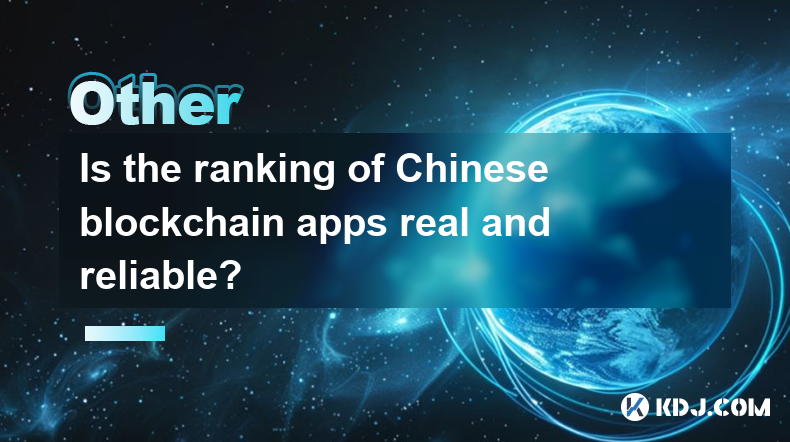
Is the ranking of Chinese blockchain apps real and reliable?
Apr 04,2025 at 09:01pm
The ranking of Chinese blockchain apps has become a topic of interest for many in the cryptocurrency community, as it provides insights into the popularity and adoption of blockchain technology within China. However, the reliability and authenticity of these rankings are often questioned. This article aims to delve into the factors that influence these ...
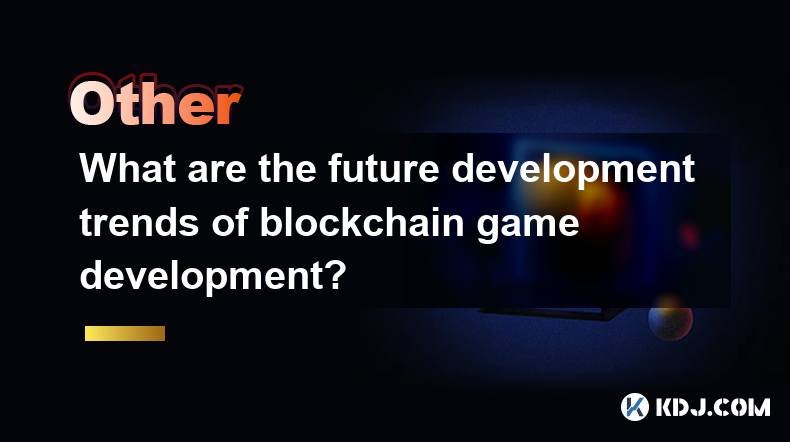
What are the future development trends of blockchain game development?
Apr 03,2025 at 05:00am
Blockchain technology has revolutionized various industries, and gaming is no exception. As we look to the future, several trends are set to shape the development of blockchain games. These trends not only promise to enhance the gaming experience but also to integrate blockchain technology more seamlessly into the gaming ecosystem. Let's explore these t...
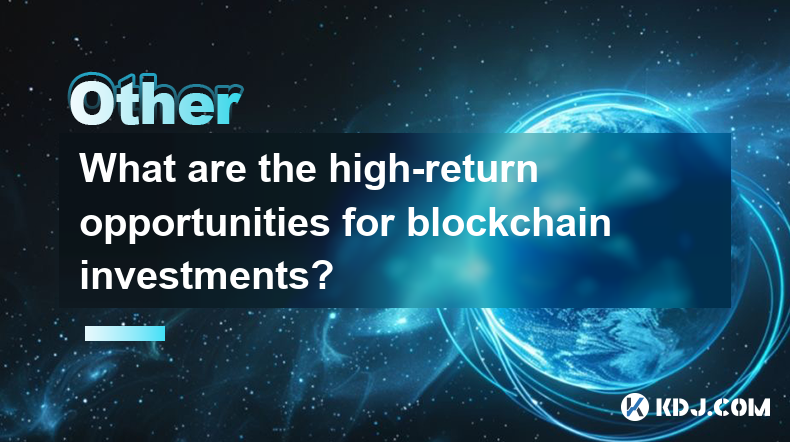
What are the high-return opportunities for blockchain investments?
Apr 05,2025 at 02:35pm
Blockchain technology has revolutionized the financial world, offering numerous high-return investment opportunities. These opportunities span various sectors within the cryptocurrency ecosystem, including cryptocurrencies, decentralized finance (DeFi), non-fungible tokens (NFTs), and blockchain startups. Each of these areas presents unique risks and re...
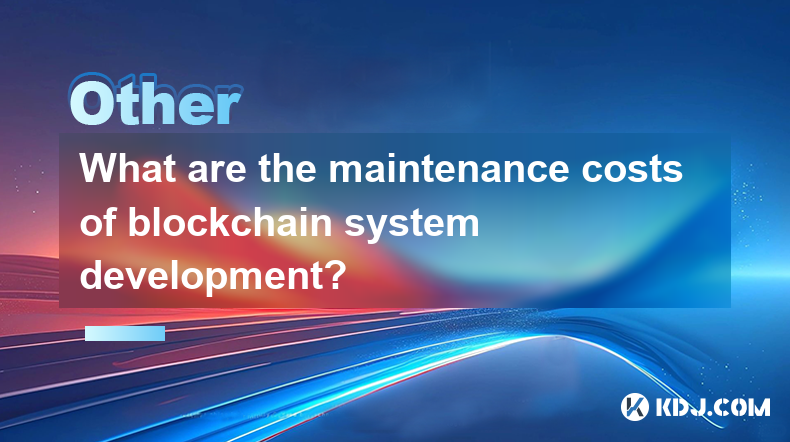
What are the maintenance costs of blockchain system development?
Apr 03,2025 at 06:07pm
The maintenance costs of blockchain system development are multifaceted and depend on various factors. These costs can include technical maintenance, security updates, infrastructure expenses, and personnel costs. Understanding these elements is crucial for anyone planning to develop or maintain a blockchain system. Technical MaintenanceTechnical mainte...
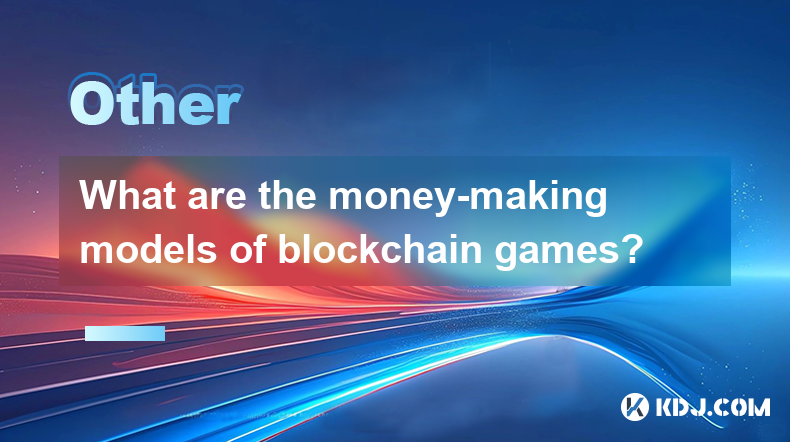
What are the money-making models of blockchain games?
Apr 04,2025 at 02:00pm
Blockchain games have emerged as a revolutionary way for players to earn real money while enjoying their favorite pastime. These games leverage the power of blockchain technology to create unique money-making models that benefit both the players and the developers. In this article, we will explore the various money-making models of blockchain games and ...
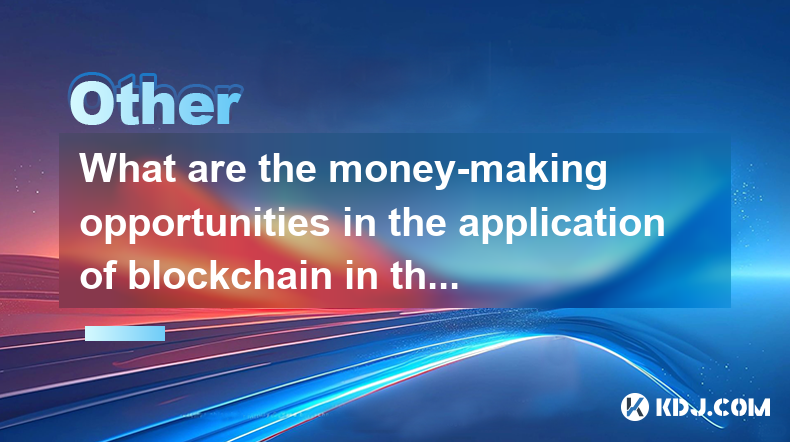
What are the money-making opportunities in the application of blockchain in the field of Internet of Things?
Apr 05,2025 at 10:35pm
The integration of blockchain technology with the Internet of Things (IoT) presents numerous money-making opportunities. Blockchain, with its decentralized and secure nature, can revolutionize how IoT devices interact, manage data, and conduct transactions. This article will explore various avenues where entrepreneurs, developers, and investors can capi...

Is the ranking of Chinese blockchain apps real and reliable?
Apr 04,2025 at 09:01pm
The ranking of Chinese blockchain apps has become a topic of interest for many in the cryptocurrency community, as it provides insights into the popularity and adoption of blockchain technology within China. However, the reliability and authenticity of these rankings are often questioned. This article aims to delve into the factors that influence these ...

What are the future development trends of blockchain game development?
Apr 03,2025 at 05:00am
Blockchain technology has revolutionized various industries, and gaming is no exception. As we look to the future, several trends are set to shape the development of blockchain games. These trends not only promise to enhance the gaming experience but also to integrate blockchain technology more seamlessly into the gaming ecosystem. Let's explore these t...

What are the high-return opportunities for blockchain investments?
Apr 05,2025 at 02:35pm
Blockchain technology has revolutionized the financial world, offering numerous high-return investment opportunities. These opportunities span various sectors within the cryptocurrency ecosystem, including cryptocurrencies, decentralized finance (DeFi), non-fungible tokens (NFTs), and blockchain startups. Each of these areas presents unique risks and re...

What are the maintenance costs of blockchain system development?
Apr 03,2025 at 06:07pm
The maintenance costs of blockchain system development are multifaceted and depend on various factors. These costs can include technical maintenance, security updates, infrastructure expenses, and personnel costs. Understanding these elements is crucial for anyone planning to develop or maintain a blockchain system. Technical MaintenanceTechnical mainte...

What are the money-making models of blockchain games?
Apr 04,2025 at 02:00pm
Blockchain games have emerged as a revolutionary way for players to earn real money while enjoying their favorite pastime. These games leverage the power of blockchain technology to create unique money-making models that benefit both the players and the developers. In this article, we will explore the various money-making models of blockchain games and ...

What are the money-making opportunities in the application of blockchain in the field of Internet of Things?
Apr 05,2025 at 10:35pm
The integration of blockchain technology with the Internet of Things (IoT) presents numerous money-making opportunities. Blockchain, with its decentralized and secure nature, can revolutionize how IoT devices interact, manage data, and conduct transactions. This article will explore various avenues where entrepreneurs, developers, and investors can capi...
See all articles






















































































